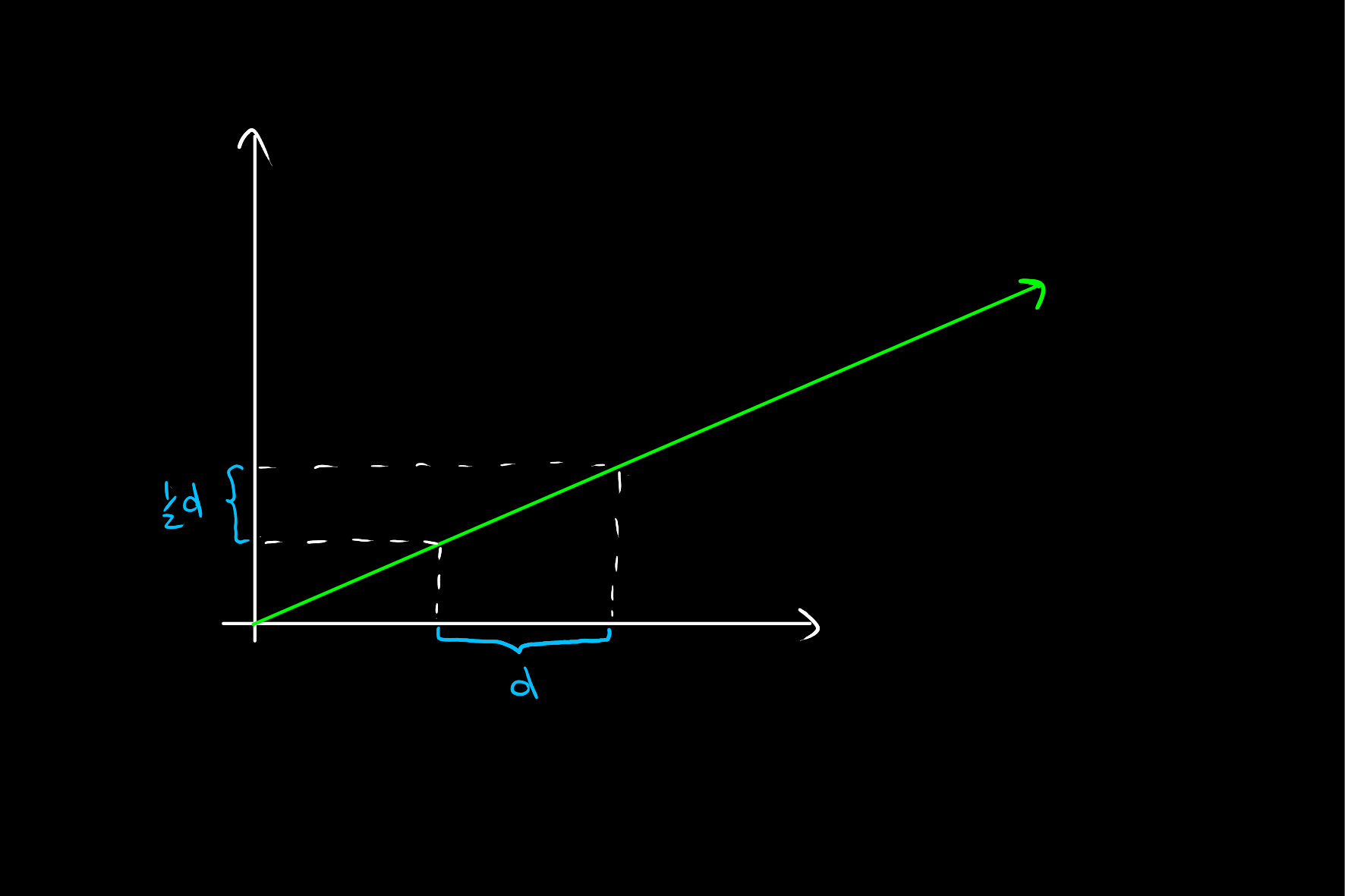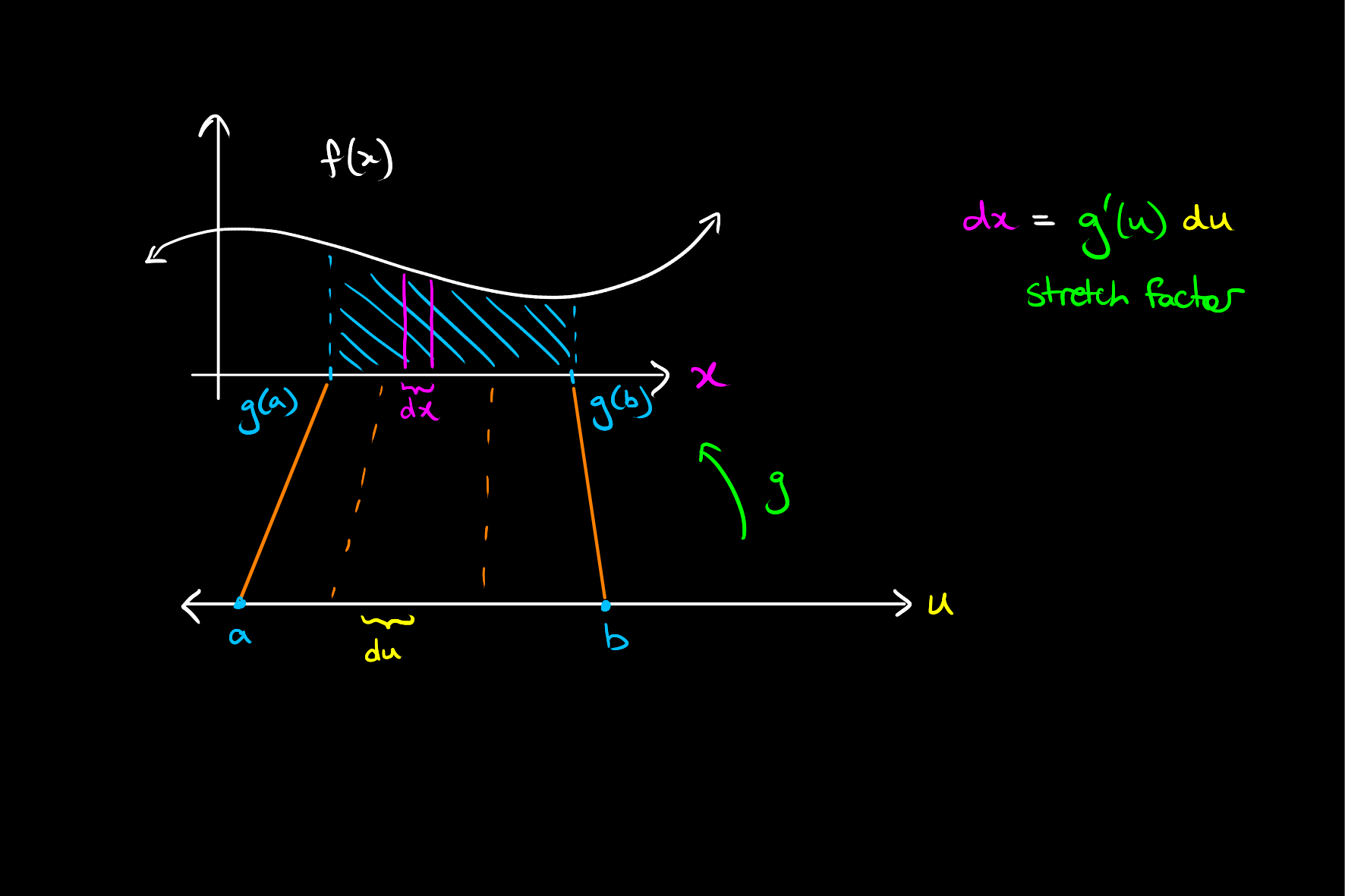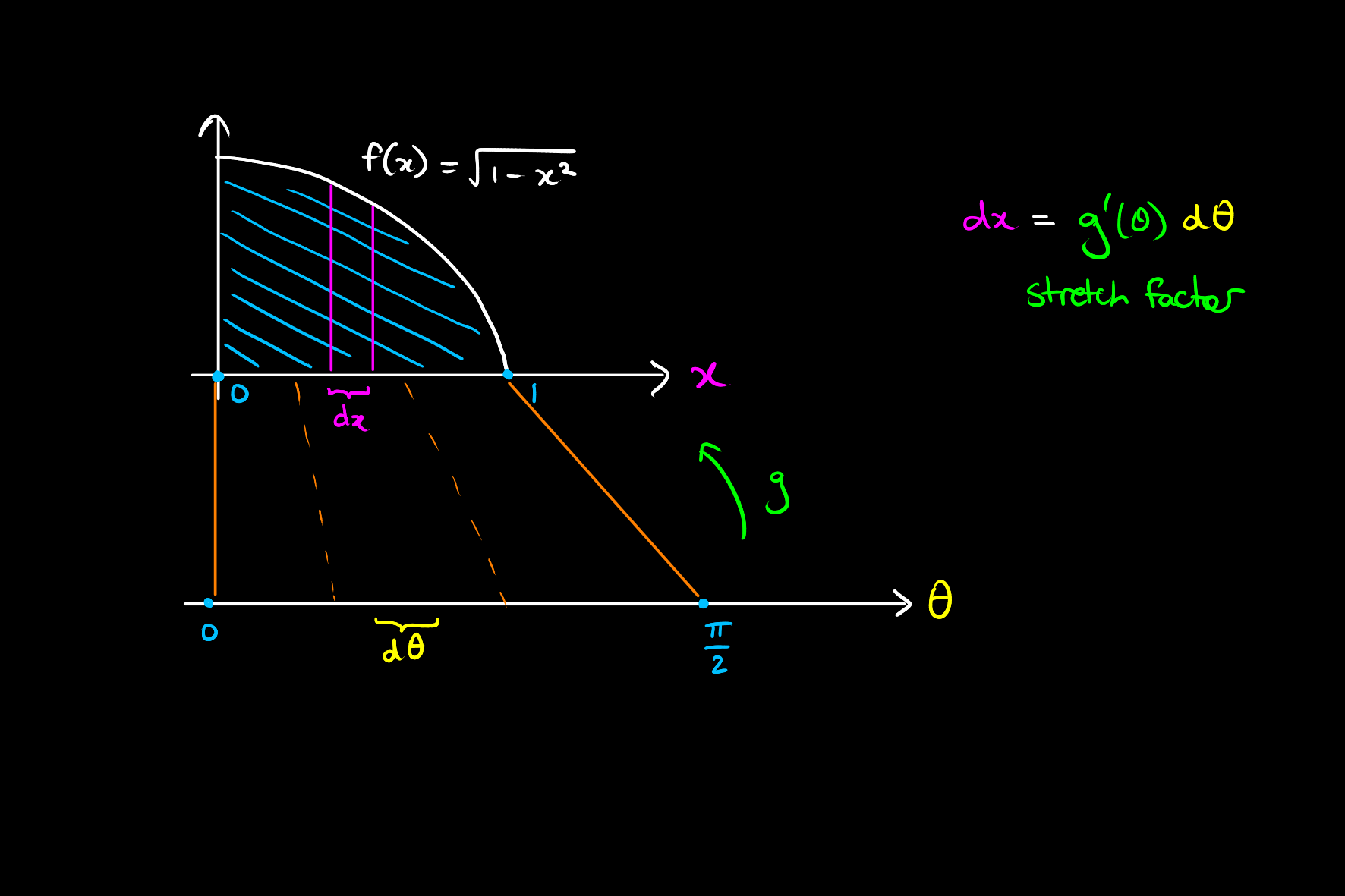Integration By Substitution
Definite Integrals
The method of integration by substitution involves transforming the integrand to be in a more manageable form by means of a change of variables, according to the formula
where
The function

In the case of integration by substitution, this stretch is at an infinitesimal point, over infinitely many points of the interval.
This makes the actual process of evaluating the left hand integral an

Alternatively, one can apply this rule in reverse, by noticing that an integral is of the form
In short, using an
while an
Integrals done using the first method may be done using the second by multiplying and dividing by appropriate factors.
As a precise claim, the change of variables formula is a corollary of the fundamental theorem of calculus, as may be evident from the way the right hand integrand looks like the left hand one after
Given a continuous real valued function
Examples
Consider a specialised version of the diagram shown above for intuition.

So here if we substitute
Additionally, we must find an
In this case we observe that the integral is of the form:
where
This means:
Indefinite Integrals
When evaluating indefinite integrals by way of substitution, we observe the fact that:
where
This is easy to prove by considering the derivative of each side, that is, it follows naturally from the chain rule.
Examples
This means, that in cases like:
we can notice by inspection that it is of the form on the left with
In cases of integrals like:
we can use a substitution of
and hence:
Treating Infinitesimals as Variables
Often integration by substitution comes down to treating infinitesimals as variables, from the derivative. Here is an example
where a substitution of
This is not particularly rigorous, and one needs to take care when doing so. In general, this works nicely in terms of the algebra however one must note what the corresponding